
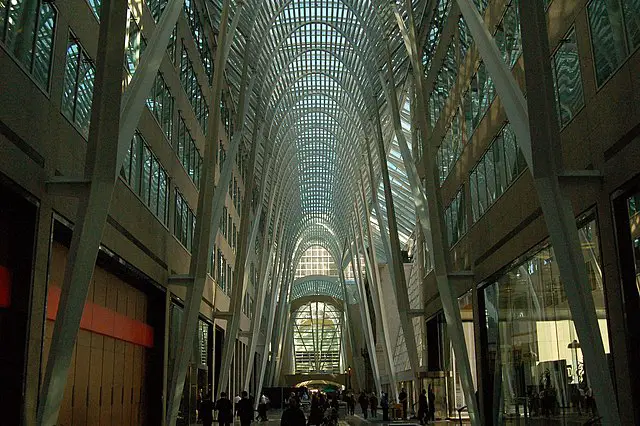

One of Manhattan’s best-known destinations for luxury shopping is Brookfield Place, which combines contemporary office space with cultural activities, selected cuisine, and world-class retail. The 14-acre, five-building complex is home to some of the most cutting-edge businesses in the world as well as more than 60 stores, eateries, and opulent facilities. It is situated in Lower Manhattan. The World Financial Center complex, which was created by César Pelli and Adamson Associates, was constructed by Olympia and York from 1983 to 1988 on land that had previously been utilised to create Battery Park City. The lobby’s granite covering and glass were extensively harmed by debris from the September 11 attacks in 2001. Since then, it has undergone a complete restoration, and considerable repairs have been made to the complex’s other structures. The glass and steel frame of the Winter Garden Atrium sustained significant structural damage, but on September 11, 2002, it was formally reopened. Following the attacks, a $250 million renovation and expansion project was undertaken at the World Financial Center, along with the building of a new east-west corridor connecting the complex with the World Trade Center site. The plan called for a transit pavillion to be constructed as an addition to the West Street side of the current Winter Garden Atrium.
Brookfield Place, a symbol and a driving force behind Lower Manhattan’s revitalisation, draws together audiences from New York and around the world in the midst of famous monuments. The Hudson River neighbourhood hosts year-round events in its expansive indoor and outdoor public spaces, drawing New Yorkers and tourists from all over the world. Brookfield Place New York is a location for discovery and inspiration that allows international brands and customers to interact, engage, and imagine. It features waterfront cafés and plazas, palm palms inside the renowned Winter Garden, art installations, and live music.
The Chelsea area of Manhattan is home to the food court, shopping centre, office complex, and television production facility known as Chelsea Market. An whole city block is taken up by the Chelsea Market complex, which is connected to the nearby 85 Tenth Avenue building by a bridge across Tenth Avenue. The building’s side facing 10th Avenue is where the High Line runs through. The National Biscuit Company (Nabisco) industrial complex, where the Oreo cookie was created and manufactured, was located where Chelsea Market was first built in the 1890s. The facility was renovated in the 1990s and now has office space over a retail concourse on the bottom floor. Google’s parent company, Alphabet Inc., currently owns Chelsea Market. The “Gansevoort Market Historic District,” which is listed on both the National Register of Historic Places and the New York State Register of Historic Places, includes Chelsea Market. The food hall has about 55 booths and has over 9 million people annually (roughly 28,000 to 35,000 per day). A former Nabisco industrial complex is among the 17 historic structures that are part of the development overall.
The market serves as the main entrance for all office traffic, further enhancing the area’s energy. A large range of locally produced food is available at food stalls, including a number of dishes made by regional chefs. It seeks out cutting-edge ideas and works closely with regional suppliers to develop profitable arrangements that benefit both parties. Chelsea Market has a butcher and vendors of fresh produce who sell raw food. It’s better to arrive hungry, especially if you want to sample a variety of items. Similar to most of New York City, Chelsea Market’s shops and restaurants can be a touch pricey, but here the cost reflects both the uniqueness and calibre of the food as well as the neighbourhood.

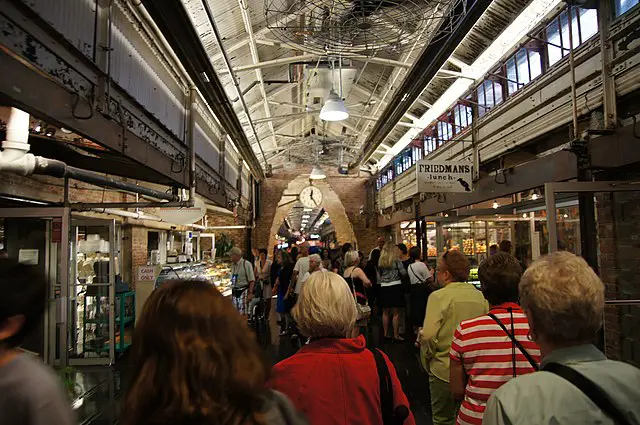
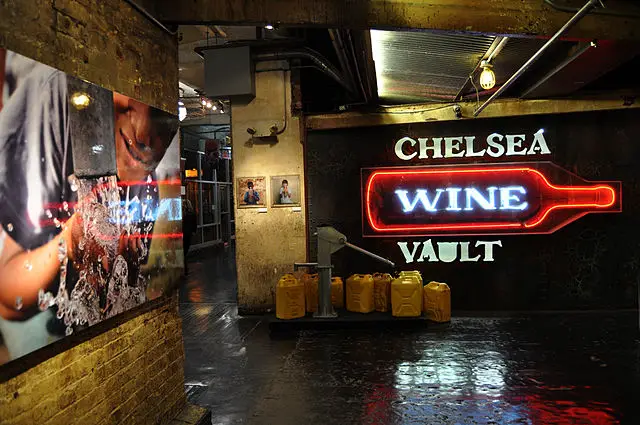
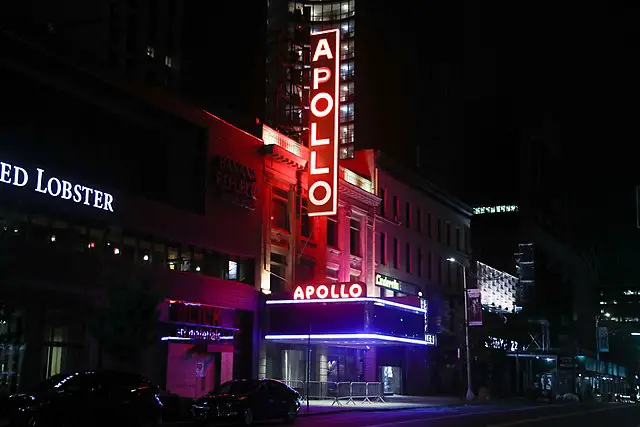
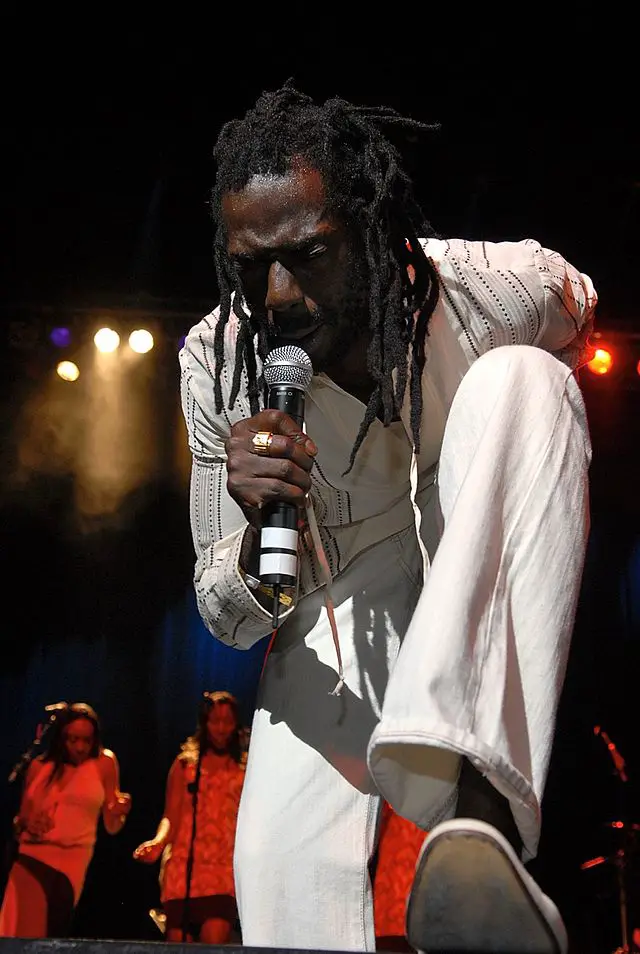
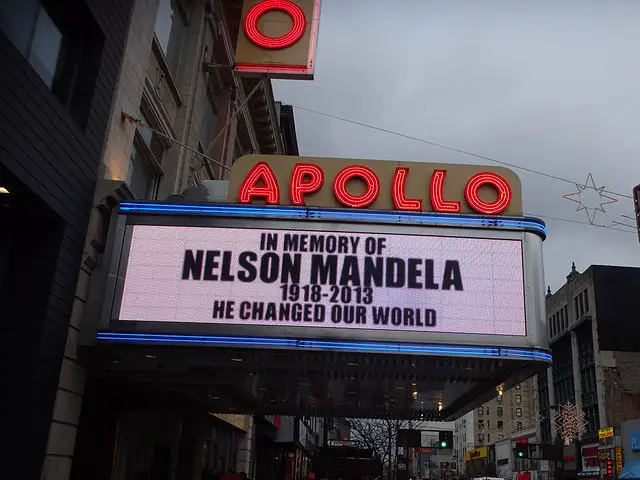
The Bryant Theatre, a vaudeville and cinema venue that first opened its doors in 1910, was bought by the Selwyn brothers ten years later. The theatre was restored, given the name Apollo Theatre, and a new collonaded exterior in a Neo-Classical/Neo-Georgian design that it would share with the Selwyn’s Times Square Theatre next door on 42nd Street. Eugene DeRosa, an architect, created both theatres. The Apollo Theatre, which had 675 seats on the orchestra level, 495 in the balcony, and 27 in boxes, could accommodate 1,197 people and was built in the Adam style. The Apollo Theatre’s legal existence ended in 1933, and Max Wilner began operating it as a burlesque theatre in late 1934 after being forced into bankruptcy due to the Depression. It remained a grind house for many years until the Brandt Organization attempted to bring back live theatre to the Apollo Theatre in 1979. They cleaned it up and gave it a new marquee, announcing the New Apollo Theatre. This lasted until 1938 when films returned to the Apollo Theatre. Legitimate theatre would last for a short while when the Apollo Theatre started showing motion pictures again in 1983. The Academy, a concert auditorium, would be the Apollo’s final guise. The orchestra level seats in the theatre were taken out for this, while the balcony seats were left in place. The original decor was painted a consistent, drab white. Most of the Apollo Theatre’s architectural components, including the magnificent dome from the auditorium ceiling, were removed in 1996 after the Apollo’s tenure as the Academy came to an end so they could be reused in the Ford Center for the Performing Arts, which would be built on the site of the Apollo Theatre and the nearby Lyric Theatre after their demolition. The Ford Center was later renamed the Hilton Theatre and then the Foxwoods Theatre. Black performers have performed there. The venue enjoyed its greatest success in the 1960s, but in the decade that followed, the drug crisis in Harlem and the robberies and thefts that resulted led to the venue’s closure in 1976. As an attempt to breathe new life into the theatre, which reopened that same year and included artists like Ashford and Simpson, Labelle, Cab Calloway, and Stephanie Mills, among others, Fred and Felicidad Dukes, along with Rafee Kamaal, produced two 60-minute television specials on April 1 and 2, 1976. Guy Fisher owned the theatre from 1975 to 1982. Inner City Broadcasting, a company run by former Manhattan borough president Percy E. Sutton, purchased it in 1983. In the same year, it was designated as a local and federal landmark. The State of New York bought the Apollo in 1991, and to manage it, it established the nonprofit Apollo Theater Foundation. The inside of the theatre began to be restored in 2001 by the architecture companies Davis Brody Bond and Beyer Blinder Belle, which specialises in the restoration of historic buildings. The outside was restored and a new light-emitting diode (LED) marquee was installed starting in 2005. In 2009–2010, the theatre assembled a historical archive comprising documents, photos, and other memorabilia in honour of its 75th anniversary. In addition, the theatre and Columbia University started an oral history project. Annual attendance at the Apollo Theater is estimated at 1.3 million people.
